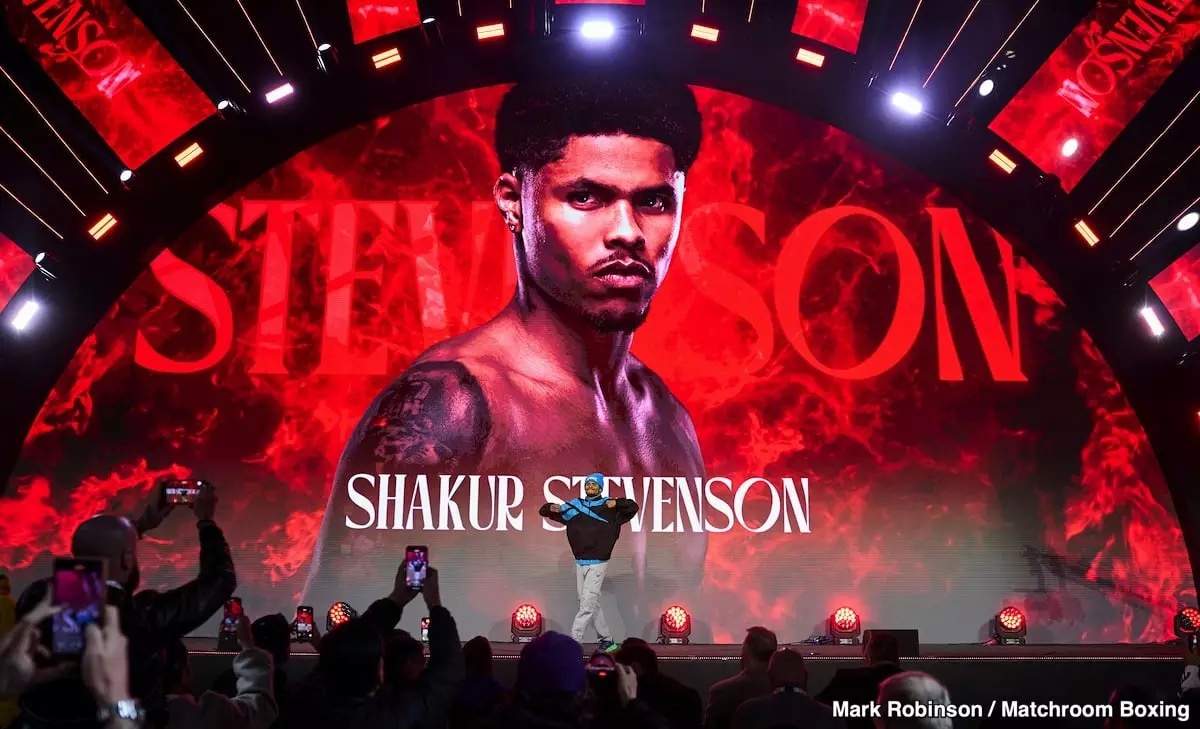In the ever-evolving world of boxing, rivalries often spark excitement and elevate a fighter’s profile to new heights. For Shakur Stevenson, the lack of a matchup against the iconic Vasily Lomachenko has transitioned from mere disappointment to palpable bitterness. Stevenson, a fighter who once admired Lomachenko as a paragon of excellence in the ring, now feels slighted and overlooked. This sentiment is not simply a product of ambition but rather a painful reflection on the modern boxing landscape where popularity often trumps skill.
As Stevenson advanced to the lightweight category in 2023, many fans anticipated a showdown with Lomachenko, a three-division world champion whose name resonates across the sport. However, Lomachenko’s reluctance to face Stevenson, whom he might have viewed as an underdog lacking the star power to attract a massive audience, has driven a wedge into their professional relationship. Stevenson’s frustration extends beyond personal disappointment; it encapsulates a broader critique of the sport where fighters sometimes prioritize commercial viability over athletic merit.
A Test of Legacy and Skill
Stevenson’s discourses on Lomachenko underscore a pivotal crossroads in their careers. As the once-celebrated Lomachenko enters his late thirties, many observers speculate whether age and diminished agility may impact his performance. While Lomachenko displayed remnants of his famed prowess in previous matches, notably against George Kambosos Jr., questions remain regarding whether he can maintain that level of superiority against younger competitors like Stevenson. However, this perspective risks glossing over the fundamental skill set that Lomachenko has honed over time, intimidating even the most accomplished boxers.
In contrast, Stevenson’s recent performances reveal a stark dichotomy between his defensive acumen and offensive capabilities. Critics point out that while Stevenson excels in evasion and tactical awareness, his offensive arsenal often appears limited when viewed alongside Lomachenko’s dynamic and multifaceted approach to scoring. This disparity creates a compelling narrative: would a matchup between these two effectively showcase a clash of styles, or would it result in an imminent victory for the more seasoned fighter?
The Weight of Unmet Expectations
When Shakur was asked about his greatest disappointments in pursuing high-profile bouts, his candid response tilted heavily toward Lomachenko over other popular names such as Tank Davis. The revelation that Lomachenko, once a figure that inspired him, now evokes disappointment represents a profound transformation in Stevenson’s perception of the sport. The emotional weight of unmet expectations serves as a reflection not only of his aspirations but also of the inherent challenges in navigating the boxing fraternity, where egos often collide with competitive integrity.
Stevenson’s acknowledgment of Lomachenko’s legacy as a “legend” only adds layers to this complex relationship. There lies an intrinsic conflict when an idol fails to recognize a protégé with potential. Stevenson’s desire for recognition as an equal in the ring clashes head-on with the sometimes-patronizing nature of veteran athletes who may obscure upcoming talent due to their entrenched reputations. This element of respect, which is often accorded to established fighters, has seemingly eluded Stevenson, leading to an emotional reevaluation of his admiration for Lomachenko.
The Future of Boxing Rivalries
As the boxing realm continues to grapple with the interplay of skill, legacy, and star power, Stevenson’s plight embodies the narrative of a fighter caught in the transition between the fading stars of one era and the rising talents of another. It raises vital questions about how the sport defines worth and competitiveness in an age where media representation and commercial success often overshadow raw talent.
For Stevenson, the challenge ahead lies not just in pursuing matchups with notable figures but also in solidifying his own brand within a hyper-competitive environment. Winning battles in the ring is critical, but constructing a legacy that transcends mere numbers and public appeal is essential for a fighter aspiring to be recognized as one of the greats. In an era defined by both opportunity and frustration, Stevenson’s journey is far from over, but it serves as a poignant reminder that for every legend, there exists a cadre of hopefuls waiting for their moment in the spotlight.


Leave a Reply